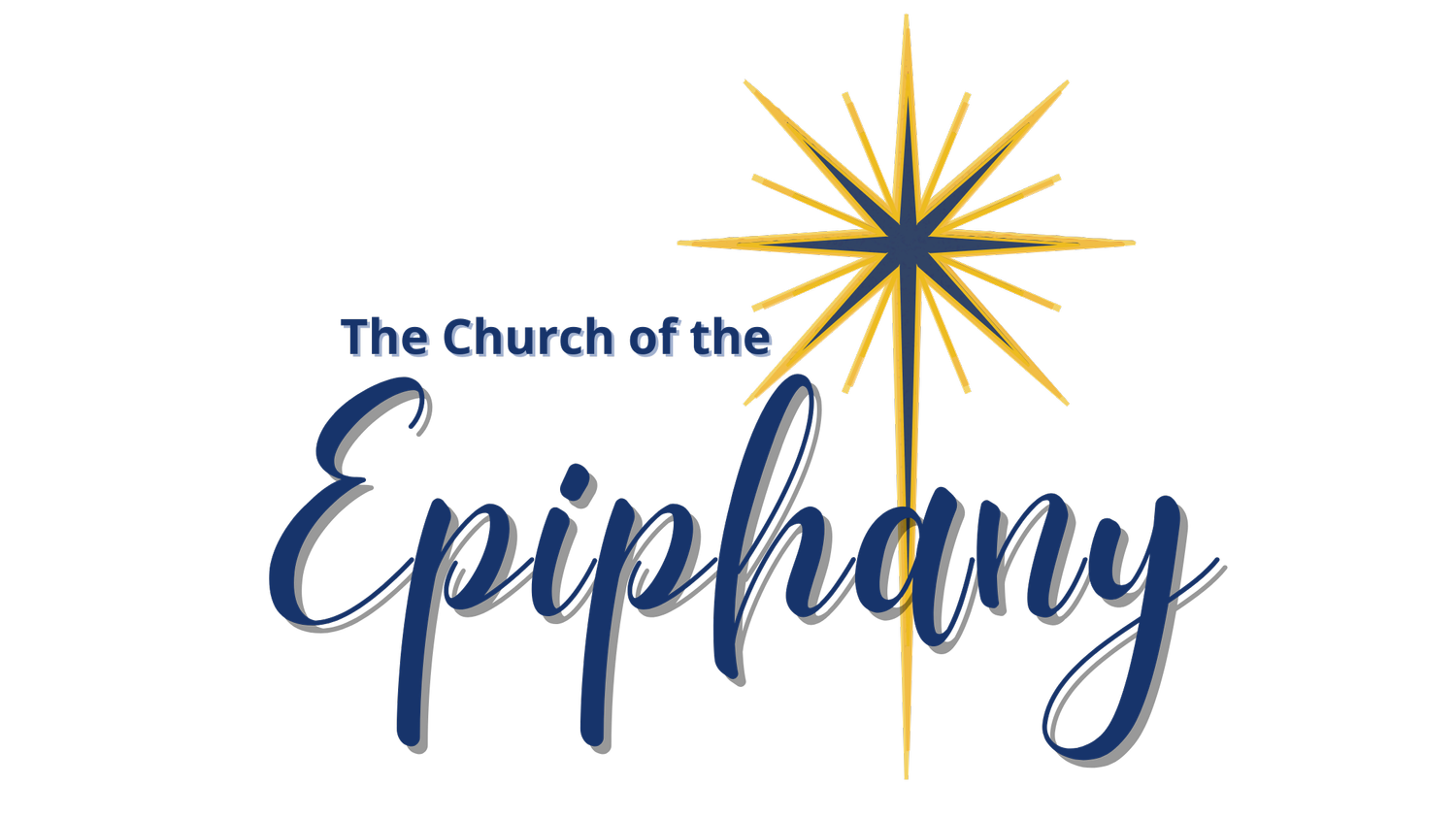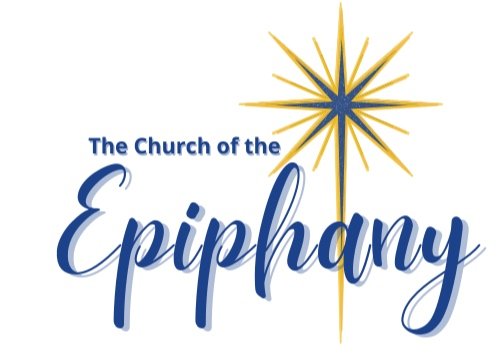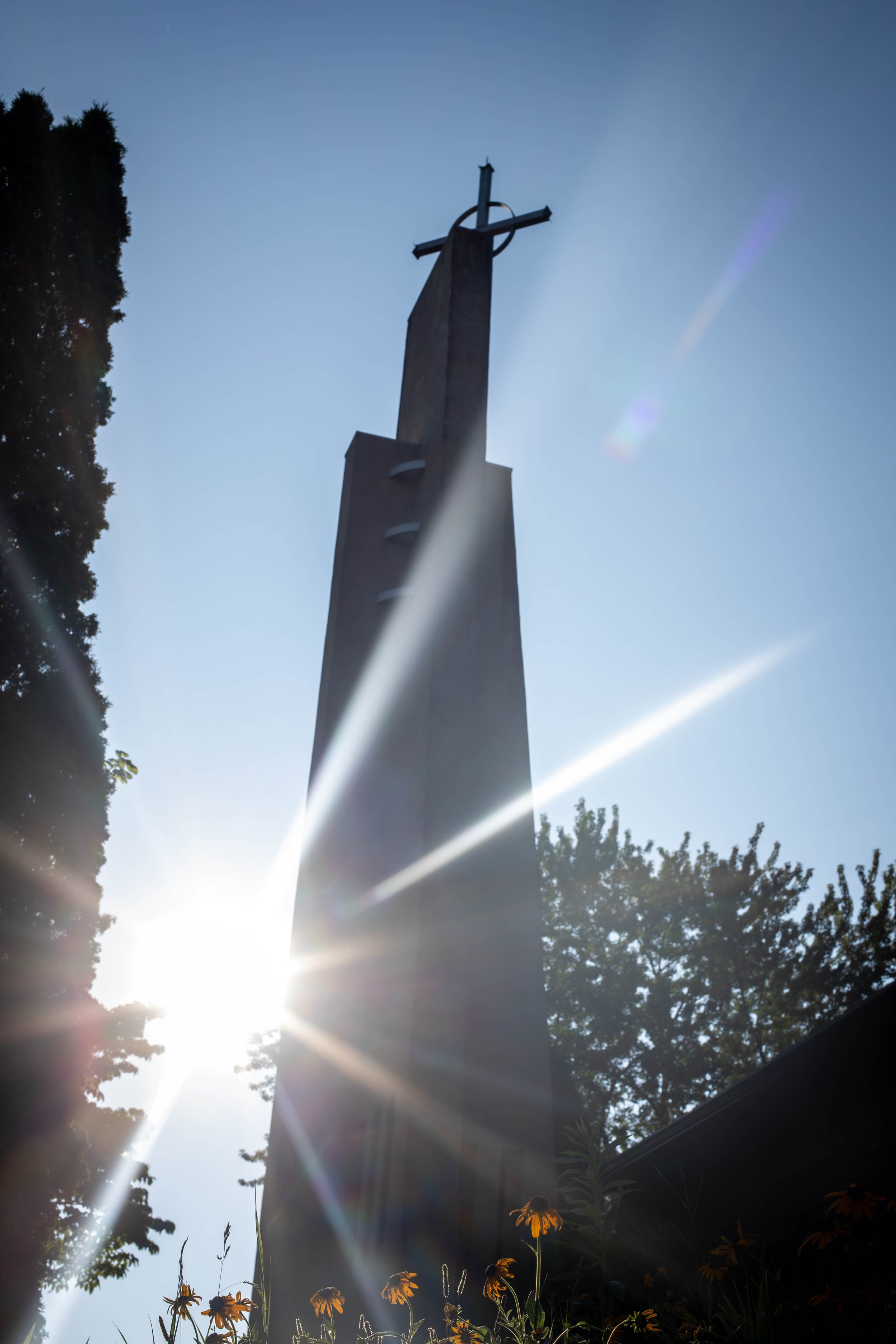History of the Church
For more than the past century, the Church of the Epiphany, Episcopal, has stood as a testament to the loyalty, dedication, and love borne by a few people for their faith, their community, and each other. If Epiphany has any lesson for the church in the world, it is that great and holy works are often done in small places— in hearts and homes rather than cathedrals.
The Coat of Arms
The arms of the parish was designed by the Very Reverand Frederic R. Murray, Dean of the Cathedral of St. Paul, Erie, Pennsylvania.
The white field represents the liturgical color of our patroal feast, the Feast of the Epiphany. The cross crossolette is sometimes known as the Epiphany cross, since its out-reaching crossolettes suggest the missionary outreach implict in the message of the Epiphany—the spreading of the Gospel to the four corners of the earth. The initial mission of the Episcopal Church in Grove City was dedicated Holy Cross so the use of the cross for the Epiphany is reminiscent of the early effort. The trees are to locate the cross in a grove and thus bespeak the site of the parish.
The motto comes from Isaiah 61:3…”that they might be called trees of righteousness, the planting of the Lord.” It suggests the function of the parish is to be such compelling trees of righteousness that the community will join us in becoming a genuine planting of the Lord.
OVER 100 YEARS OF THE CHURCH OF THE EPIPHANY
The Traveling Church: 1893-1930
In 1893 a small but determined group of Grove City Episcopalians petitioned the Dioces of Pittsburgh to provide them with services in town, and as a result of their efforts the Reverend W. G. Lawry of St. Clement’s Episcopal Church in Greenville came to Grove City on September 12, 1893 to found the Mission of the Holy Cross. In 1910, Holy Cross Mission becamse part of the newly created Diocese of Erie and was renamed the Church of the Epiphany. After searching for a permanent home, Grove City College offered the use of Ivy Chapel on the college campus, which lasted until 1914. The church went through several lean years from 1918-1930, but never quite died as parishioners continued together wherever they could find a welcoming room.
A Home in Town: 1930-1967
In 1930 the Church of the Epiphany finally got the permanent home it had wanted for so long, in the former Grace Reformed Church on Main Street. During this time, much growth happened within the church. In 1934, The Epiphany Guild, forerunn of today’s Episcopal Church Women (ECW), was created. The Altar Guild came into being in 1939. In 1948, Epiphany achieved another of its long-held dreams with the acquisition of a house on Madison Avenue to serve as a vicarage. Mr. Lewis Tillson, became the church’s first resident vica on July 18, 1948. In the early 1950’s, Epiphany continued to improve its building, with a focus on creating space for it’s enlarging congregation. By the early sixties, it became evident that the congregation had outgrown this building and obtained permission from the Diocese to search for land to build a new church. By May of 1968, a new church had been built on a seven-acre parcel on Route 173 South about one mile from town.
A Home in the Country: 1968- present
In the years from 1968 to the present, the Church of the Epiphany has maintained its commitment to the life of its congregation and community and has made a bit of a church and diocesan history besides by being the first parish in the diocese of Northwestern Pennsylvania to be served by women clergy. In the 1970’s, a vicarage on church property behind the church building, was built. During this time, the first young women and girls were trained to serve as acolytes. The Reverend Dr. Barbara Akin, Vicar, and the Reverend Jean Christoferson, Deacon, spoke eloquently to the world and to the Episcopal Church about what women have to offer, which is perhaps the most significant legacy of this little country church.
**This history has been drafted from Be Trees of Righteosness: One-Hundred Years of The Chruch of the Epiphany (1893-1993) by Bonnie Marie Sykes.





